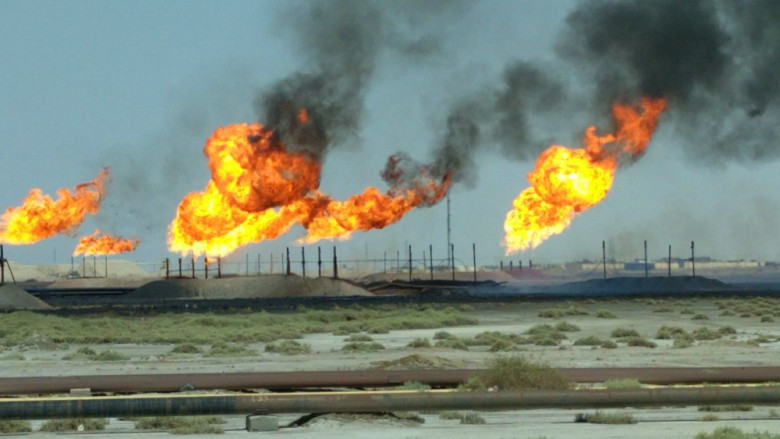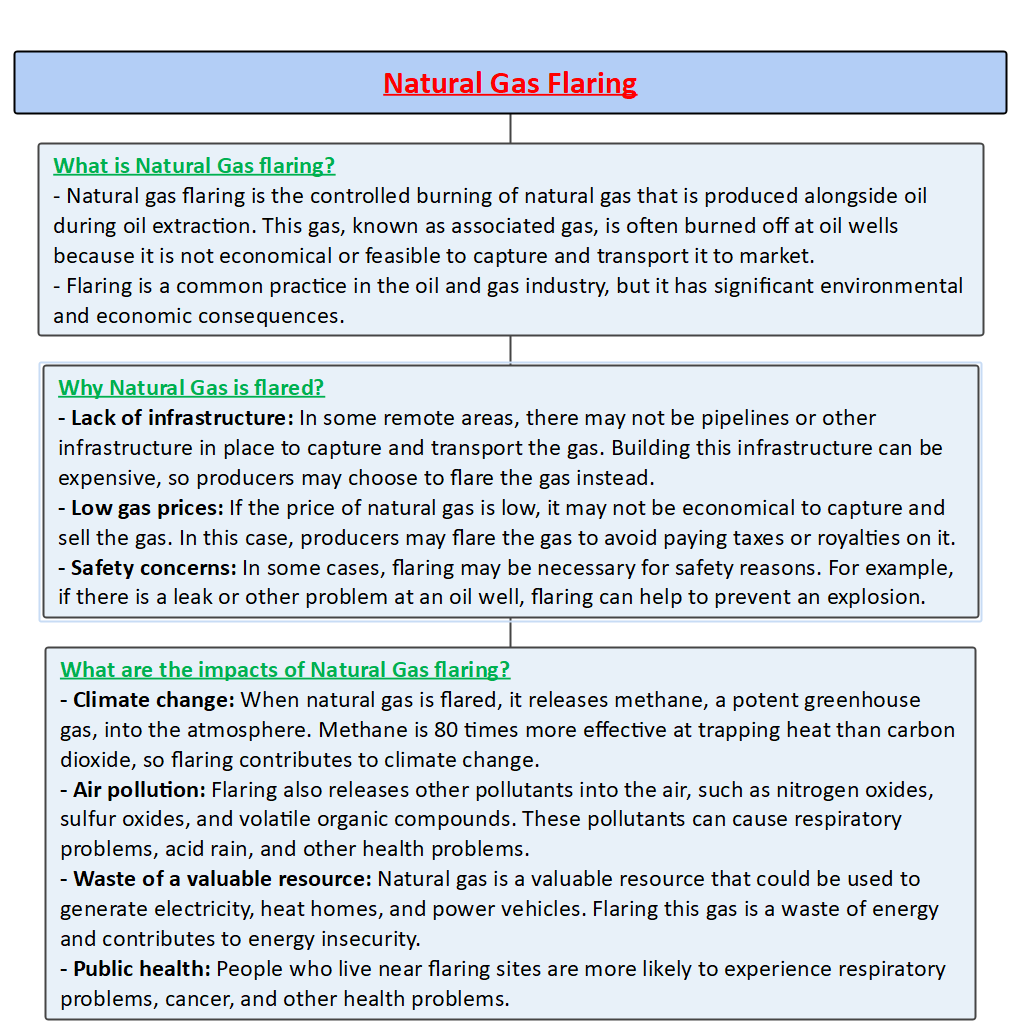Description

Copyright infringement not intended
Picture Courtesy: https://www.worldbank.org/en/programs/gasflaringreduction/gas-flaring-explained
Context: Natural Gas Flaring releases nitrogen oxides (NOx), which harm air quality and public health.
What is Natural Gas Flaring?
- Natural gas flaring, also known as burning, is a common practice in the oil and gas industry where excess natural gas, a byproduct of oil extraction, is burned off instead of being captured and utilized.
- This practice is often used when capturing or transporting the gas is deemed uneconomical or technically challenging.
- While it reduces the climate impact and safety hazards of storing the gas on site, it releases nitrogen oxides (NOx) into the atmosphere, posing a significant air quality concern.

F3UEL Project and New Research
- The F3UEL project aims to improve US oil and gas emission estimates using data-driven approaches. A recent study published in Environmental Science and Technology led by the University of Michigan directly measured NOx emissions from natural gas flares in three key regions, representing over 80% of US flared gas volumes.
Implications of the study
- This research highlights the need for more accurate emission measurements to better understand the environmental impact of flaring.
- It emphasizes the importance of targeting high-emission flares for mitigation strategies to reduce overall NOx emissions.
- The findings suggest that reducing the volume of gas flared would have greater climate and air quality benefits than previously realized.
How much natural gas is flared?
- According to the World Bank, around 140 billion cubic meters of natural gas was flared globally in 2022. This is equivalent to the annual gas consumption of Germany.
Where is natural gas flaring most common?
- Natural gas flaring is most common in developing countries, where infrastructure is often lacking and regulations are weak. The top five countries for gas flaring in 2022 were:
- Russia
- Iraq
- Iran
- United States
- Algeria
Environmental and Health impacts of flaring
- Air pollution: Flaring produces various pollutants, including nitrogen oxides (NOx), which contribute to smog, ozone formation, and respiratory illnesses. This study highlights the concern that some flares emit NOx at much higher rates than previously estimated, potentially impacting the health of workers and nearby communities.
- Climate impact: While flaring reduces methane emissions compared to direct release, it still produces carbon dioxide, a greenhouse gas contributing to climate change.
- Resource waste: Flaring represents a waste of valuable energy resources that could be captured and utilized for heating, electricity generation, or other purposes.

What is being done to reduce natural gas flaring?
- Regulations: Some countries have implemented regulations that limit the amount of gas that can be flared. For example, the World Bank has a Zero Routine Flaring by 2030 initiative that aims to eliminate non-essential flaring.
- Technology: New technologies are being developed to capture and use flared gas. For example, some companies are using gas flaring to generate electricity.
- Market-based solutions: Some countries are using market-based mechanisms to encourage producers to capture and sell their gas. For example, some countries have implemented carbon taxes or emissions trading schemes.

Conclusion
- Natural gas flaring is a significant problem, but there are a number of initiatives underway to reduce it. With continued effort, it is possible to eliminate non-essential flaring by 2030. This would have a significant positive impact on the environment, human health, and the global economy.
|
PRACTICE QUESTION
Q. Which of the following are the primary reasons for natural gas flaring?
1. Lack of infrastructure in remote areas
2. High gas prices incentivizing capture
3. Safety concerns during oil well problems
4. Regulatory requirements for gas utilization
Select the correct code:
A) Only one
B) Only two
C) Only three
D) All four
Answer: B
Explanation:
Reasons for natural gas flaring:
1. Lack of infrastructure in remote areas: This is a primary reason for flaring. If pipelines or other means to transport the gas are unavailable, companies may have no choice but to flare it.
2. High gas prices incentivizing capture: This statement is incorrect. High gas prices would discourage flaring and encourage capturing and selling the gas for profit.
3. Safety concerns during oil well problems: This is another primary reason for flaring. Flaring can help prevent explosions or uncontrolled releases of gas in case of leaks or other issues.
4. Regulatory requirements for gas utilization: While some regulations might exist, they typically limit flaring, not require it. Therefore, this is not a primary reason.
So, only Statements 1 and 3 are primary reasons for natural gas flaring.
|













